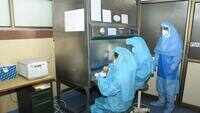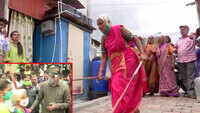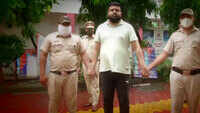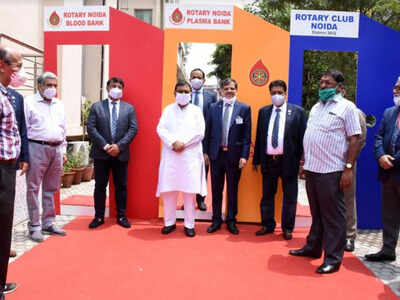
NOIDA: After the first plasma trials from Government Institute of Medical Sciences GIMS, Greater Noida, Uttar Pradesh and GB Nagar district added yet another feather in their cap – its first and country’s third plasma bank at the Rotary Blood Bank in sector 31.
The bank which was inaugurated by UP’s minister of state (health) Atul Garg on Saturday, along with GB Nagar district magistrate Suhas LY, police commissioner Alok Singh and chief medical officer Dr Deepak Ohri, is the third in the country – the other two being in Delhi.
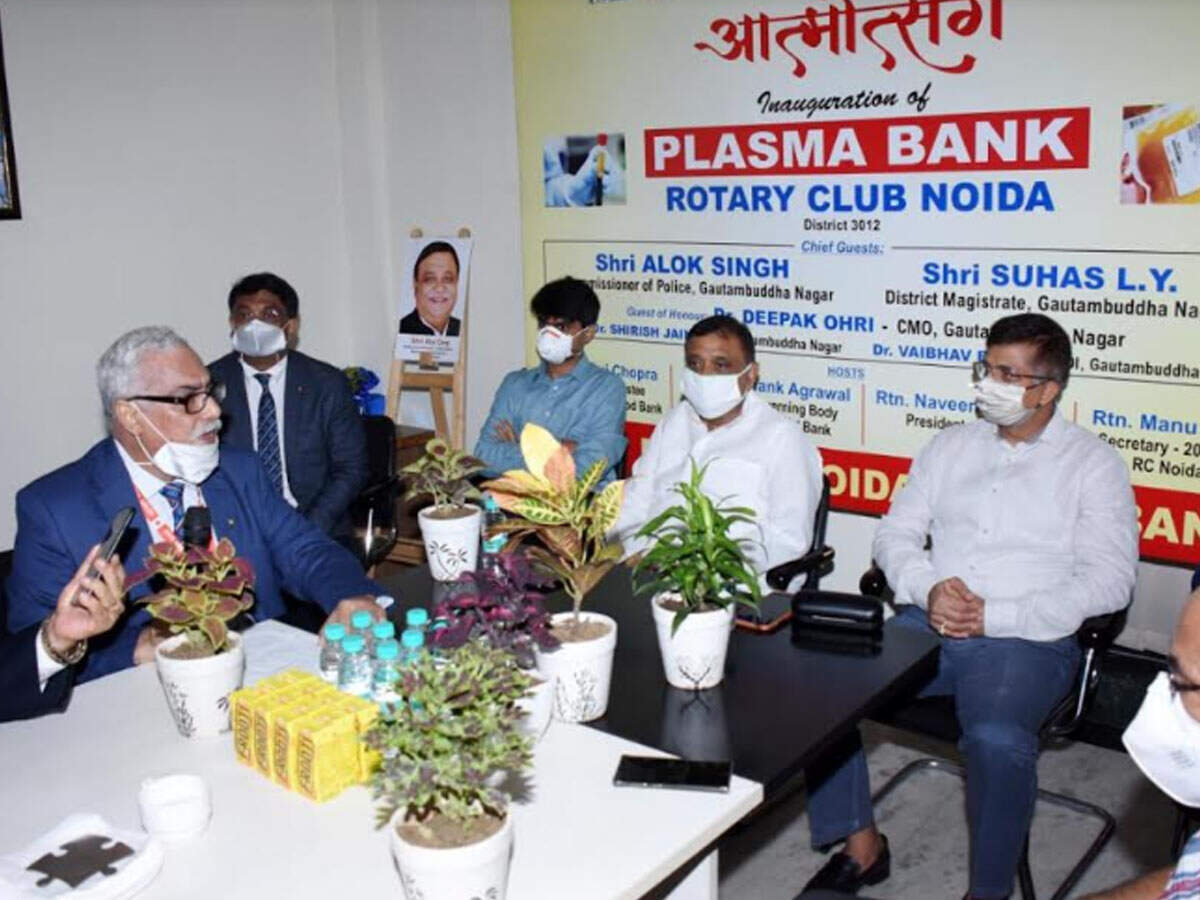
“It is the first plasma bank in the entire state and was inaugurated by UP health minister Atul Garg on Saturday,” Dr Ravi Chopra managing trustee Rotary Blood Bank Nithari Sector 31 said.
According to Dr Chopra, the plasma bank at sector 31 has a capacity to store 10,000 units of 200 ml each blood plasma. This can now be provided to moderate to serious Covid patients at Rs 10,500 for general public and Rs 4,500 for government hospital patients while it’ll be given free to BPL (below poverty line) card holders and pregnant women. “It was suggested by the DM and CMO to give the plasma free of charge to the BPL card holders and pregnant women. It will be done so as per their recommendation,” said Dr Chopra, adding that the plasma bank aims to address the plasma shortage issue both at the district and state level.
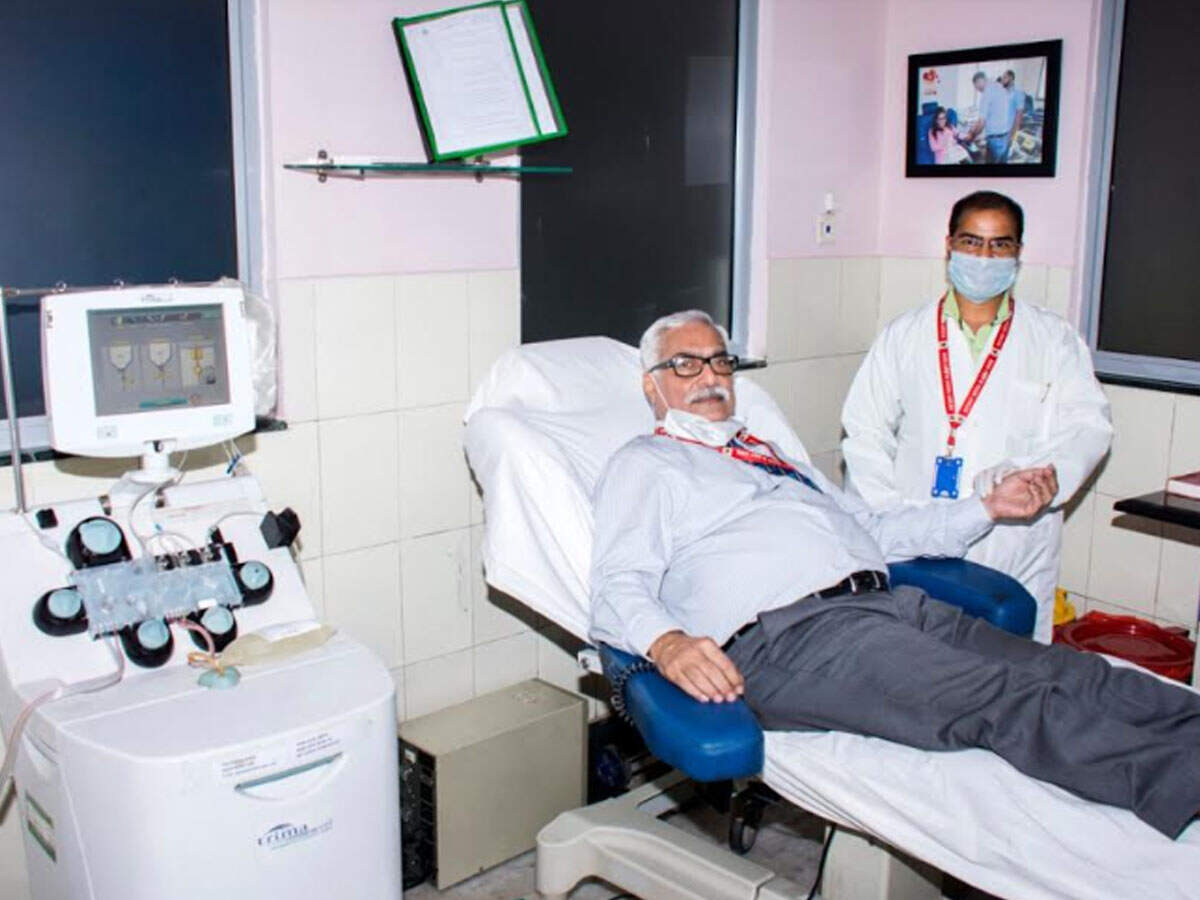
As one of the most affected areas with active cases on Sunday being 773, GB Nagar has had 40 deaths even as many patients are still fighting the disease especially at its L3 facility at Sharda hospital dealing with only comorbid to serious patients where plasma therapy comes handy.
While the district magistrate Suhas LY maintained that the plasma bank is yet another achievement for the district after GIMs and Child PGI being first to already undertake convalescent plasma trials under ICMR’s national trials from the district, GIMS officials will be sent to supervise plasma bank at sector 31 and extend their proficiency to it.
While GIMS has already taken the lead from early May in giving convalescent plasma treatment (CPT) – a first for the district and state - it does not have a dedicated plasma bank. “We have done maximum CPTs - on 78 patients so far including from other hospitals, cities and states and have our own indigenous blood bank. We also have enough plasma donors, totaling 54 so far, and we are in the process of making a bank for plasma donors,” said a health official from GIMS.
The use of convalescent plasma was recommended as an empirical treatment during outbreaks of Ebola virus in 2014, and a protocol for treatment of Middle East Respiratory Syndrome (MERS) in 2015. CP therapy was also successfully used in the treatment of H5N1 avian influenza and 2009 H1N1 pandemic with satisfactory efficacy and safety.
Plasma, which comprises 55% of a person’s blood, when extracted from recovered Covid-19 patient provides rich antibodies which when injected into recovering Covid-19 patients help them fight the Covid virus and ward off infection. Although the CPT is currently under national trials of ICMR, its overall effectiveness is yet to be studied.
“As the virological and clinical characteristics share similarity among SARS, MERS and Covid-19, CP therapy might be a promising treatment option for Covid-19,” said Dr RK Gupta director GIMS, adding that patients who have recovered from Covid-19 with a high neutralizing antibody titre, may be valuable donor source of CP.
The bank which was inaugurated by UP’s minister of state (health) Atul Garg on Saturday, along with GB Nagar district magistrate Suhas LY, police commissioner Alok Singh and chief medical officer Dr Deepak Ohri, is the third in the country – the other two being in Delhi.

“It is the first plasma bank in the entire state and was inaugurated by UP health minister Atul Garg on Saturday,” Dr Ravi Chopra managing trustee Rotary Blood Bank Nithari Sector 31 said.
According to Dr Chopra, the plasma bank at sector 31 has a capacity to store 10,000 units of 200 ml each blood plasma. This can now be provided to moderate to serious Covid patients at Rs 10,500 for general public and Rs 4,500 for government hospital patients while it’ll be given free to BPL (below poverty line) card holders and pregnant women. “It was suggested by the DM and CMO to give the plasma free of charge to the BPL card holders and pregnant women. It will be done so as per their recommendation,” said Dr Chopra, adding that the plasma bank aims to address the plasma shortage issue both at the district and state level.

As one of the most affected areas with active cases on Sunday being 773, GB Nagar has had 40 deaths even as many patients are still fighting the disease especially at its L3 facility at Sharda hospital dealing with only comorbid to serious patients where plasma therapy comes handy.
While the district magistrate Suhas LY maintained that the plasma bank is yet another achievement for the district after GIMs and Child PGI being first to already undertake convalescent plasma trials under ICMR’s national trials from the district, GIMS officials will be sent to supervise plasma bank at sector 31 and extend their proficiency to it.
While GIMS has already taken the lead from early May in giving convalescent plasma treatment (CPT) – a first for the district and state - it does not have a dedicated plasma bank. “We have done maximum CPTs - on 78 patients so far including from other hospitals, cities and states and have our own indigenous blood bank. We also have enough plasma donors, totaling 54 so far, and we are in the process of making a bank for plasma donors,” said a health official from GIMS.
The use of convalescent plasma was recommended as an empirical treatment during outbreaks of Ebola virus in 2014, and a protocol for treatment of Middle East Respiratory Syndrome (MERS) in 2015. CP therapy was also successfully used in the treatment of H5N1 avian influenza and 2009 H1N1 pandemic with satisfactory efficacy and safety.
Plasma, which comprises 55% of a person’s blood, when extracted from recovered Covid-19 patient provides rich antibodies which when injected into recovering Covid-19 patients help them fight the Covid virus and ward off infection. Although the CPT is currently under national trials of ICMR, its overall effectiveness is yet to be studied.
“As the virological and clinical characteristics share similarity among SARS, MERS and Covid-19, CP therapy might be a promising treatment option for Covid-19,” said Dr RK Gupta director GIMS, adding that patients who have recovered from Covid-19 with a high neutralizing antibody titre, may be valuable donor source of CP.
Quick Links
Kerala Coronavirus Helpline NumberHaryana Coronavirus Helpline NumberUP Coronavirus Helpline NumberBareilly NewsBhopal NewsCoronavirus in DelhiCoronavirus in HyderabadCoronavirus in IndiaCoronavirus symptomsCoronavirusRajasthan Coronavirus Helpline NumberAditya ThackerayShiv SenaFire in MumbaiAP Coronavirus Helpline NumberArvind KejriwalJammu Kashmir Coronavirus Helpline NumberSrinagar encounter
Get the app

